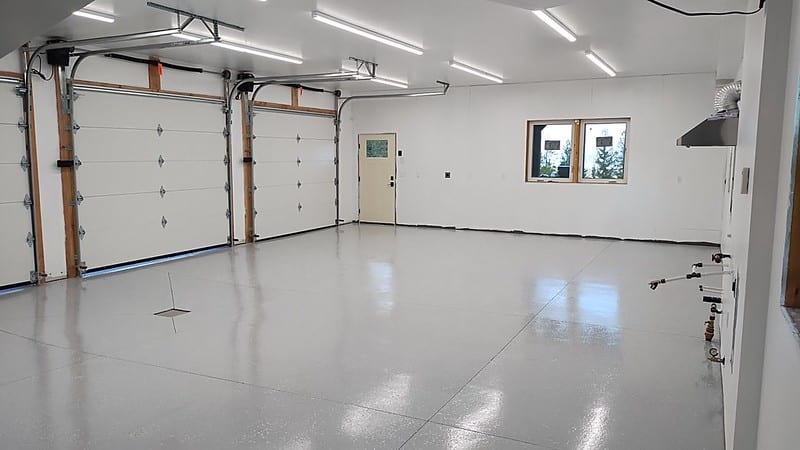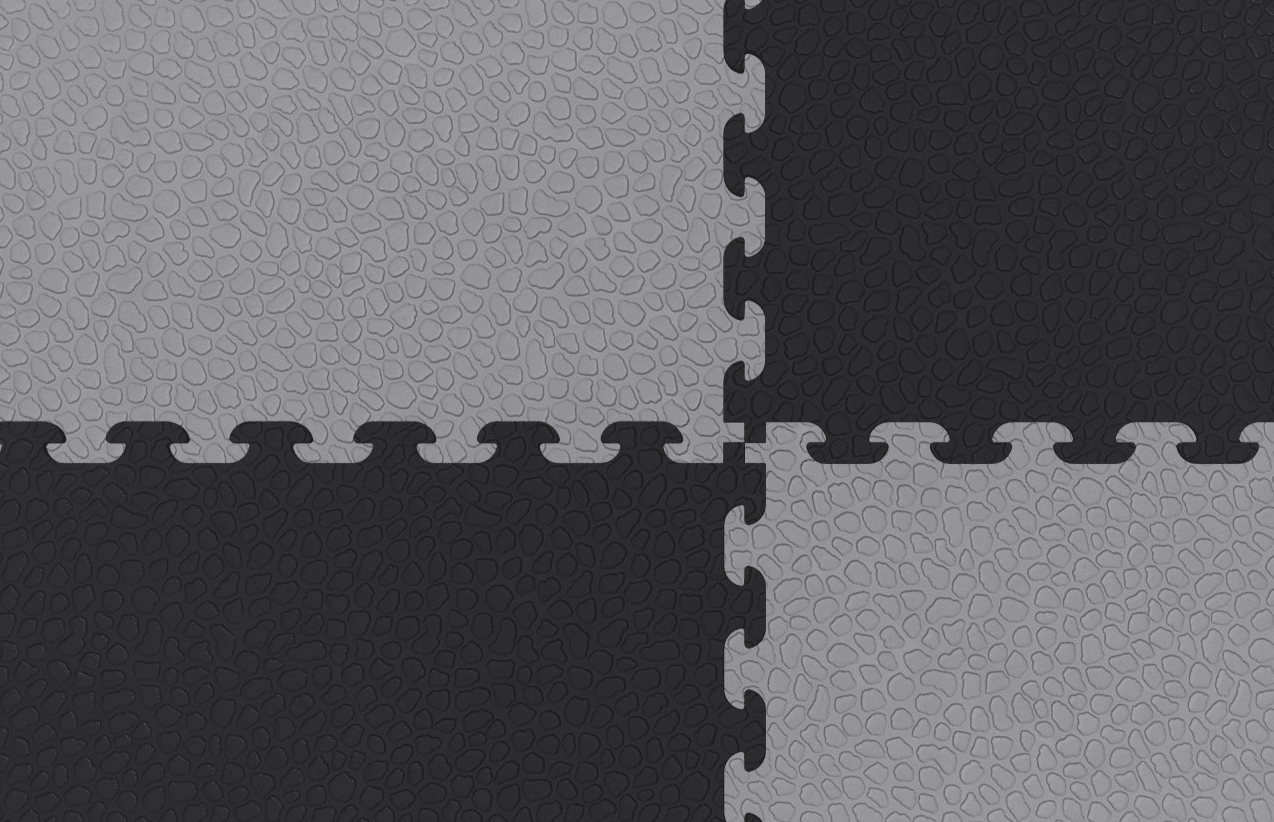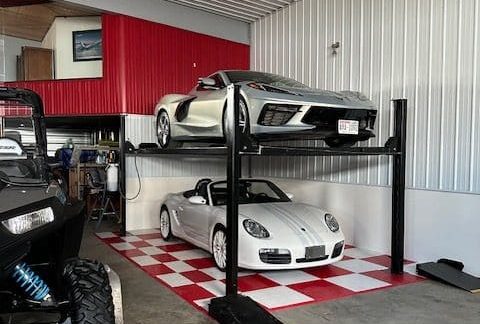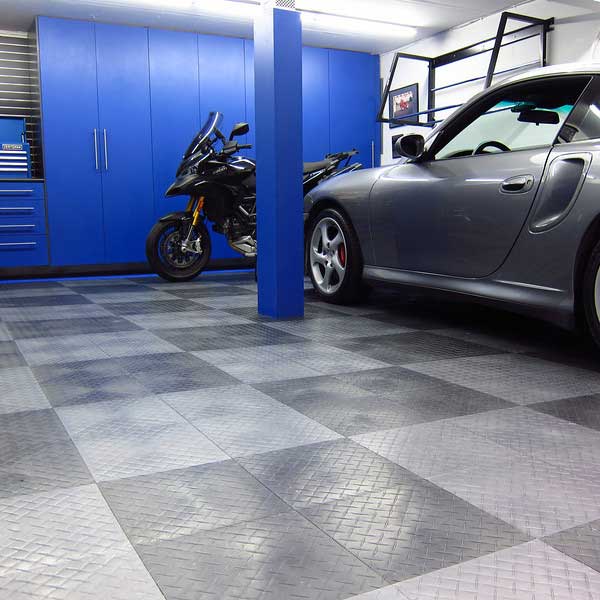You’ve invested in a beautiful, durable epoxy or polyurea coating for your garage floor – congratulations! This kind of high-performance flooring not only looks fantastic but also provides superior protection against stains, chemicals, and everyday wear. To ensure your garage floor maintains its pristine appearance and extends its impressive lifespan, consistent and proper cleaning is key. At Garage Flooring LLC, we’re here to provide you with the ultimate guide to keeping your coated garage floor looking showroom-ready.
Why Regular Cleaning Matters (Beyond Just Looks):
- Preserves Shine: Regular cleaning prevents dirt and grime buildup that can dull the glossy finish of your coating.
- Extends Lifespan: Abrasive dirt, grit, and chemicals left on the surface can slowly degrade the coating over time. Regular cleaning minimizes this wear.
- Maintains Traction: A clean floor is a safer floor. Dirt and oil can reduce the effectiveness of any non-slip additives.
- Protects Your Investment: Proper maintenance safeguards the integrity of the coating, preventing larger issues down the road.
Everyday Cleaning for Your Coated Garage Floor:
For most routine maintenance, keeping your epoxy or polyurea floor clean is surprisingly easy:
- Sweep or Vacuum Regularly: This is your first line of defense. Use a soft-bristle broom, a dust mop, or a shop vacuum to remove loose dirt, dust, sand, and small debris. This prevents grit from scratching the surface as it gets tracked around. Aim for at least once a week, or more frequently if your garage sees heavy use or outdoor activity.
- Prompt Spill Cleanup: This is perhaps the most critical step for longevity and stain prevention.
- Liquids (Oil, Antifreeze, Water): Blot spills immediately with paper towels or a clean rag. For oil or greasy spills, proceed to a deeper clean.
- Chemicals (Brake Fluid, Battery Acid, Solvents): While epoxy and polyurea are highly chemical resistant, it’s best not to let harsh chemicals dwell. Wipe up immediately using appropriate safety precautions (gloves, eye protection). Rinse the area with water if necessary.
- Mud/Dirt: Allow mud to dry, then sweep or vacuum it up before it gets tracked.
Deeper Cleaning for Stubborn Grime and Stains:
When sweeping isn’t enough, it’s time for a wet clean.
- Prepare Your Solution (Regular Maintenance): For general grime and routine mopping, a solution of warm water mixed with a neutral cleaner is ideal. Dawn dish soap is a great, readily available option. Diluted Simple Green also works well. Avoid cleaners with harsh acids, citrus, or abrasives.
- Mop the Floor: Use a clean mop (microfiber mops work well) to apply the cleaning solution. Work in sections. For heavily soiled areas, you might need to let the solution sit for a few minutes to loosen the dirt, but don’t let it dry.
- Use a Soft Brush for Stubborn Spots: For areas with caked-on dirt or light scuffs, use a soft-bristle brush (like a deck brush or a scrub brush with soft nylon bristles) to gently agitate the surface. Do NOT use wire brushes, abrasive pads, or anything that could scratch the coating.
- Tackle Stubborn Stains with TSP: For tougher stains that won’t budge with dish soap or Simple Green, a solution of TSP (Trisodium Phosphate) cleaner and water can be very effective. Mix according to package directions, apply to the stain, and gently scrub with a non-abrasive scrub pad (like a white or red nylon pad).
- Rinse Thoroughly: After cleaning, rinse the floor thoroughly with clean water using a clean mop. This removes any cleaning solution residue, which can attract dirt over time or make the floor feel tacky. You can even use a squeegee to push rinse water towards a drain or out of the garage.
- Allow to Air Dry or Squeegee: Let the floor air dry, or use a squeegee to speed up the process and prevent water spots.
What to AVOID When Cleaning Your Coated Garage Floor:
- Harsh Acids, Bleach, Citrus Cleaners: These can dull, etch, or degrade your coating over time.
- Abrasive Cleaners or Scouring Pads: Never use steel wool, abrasive powders, or harsh scrub brushes that can scratch the finish.
- Oil-Based Cleaners or Wax: These can leave a slippery residue and attract more dirt.
- Steam Cleaners: The high heat can potentially damage the coating.
- Leaving Spills: Always clean spills promptly, especially chemicals.
Preventative Measures for Maximum Longevity:
- Use Walk-Off Mats: Place mats at garage entry points to trap dirt and moisture before it reaches your coated floor.
- Utilize Containment Mats: For parking vehicles, especially in winter or for vehicles prone to drips, a garage containment mat is excellent for catching melting snow, road salt, and oil.
- Protect from Heavy Impacts: While coatings are durable, sharp, heavy impacts can still cause damage. Use rubber pads or plywood under extremely heavy or sharp objects (e.g., jack stands, engine hoists for long-term storage).
- Trim Pet Nails: If pets frequent the garage, keep their nails trimmed to minimize surface scratching.
By following these simple yet effective cleaning and maintenance practices, your epoxy or polyurea garage floor will continue to provide a beautiful, durable, and functional surface for years to come. At Garage Flooring LLC, we’re here to help you protect your investment from the ground up!
Ready to keep your garage floor looking its best?




